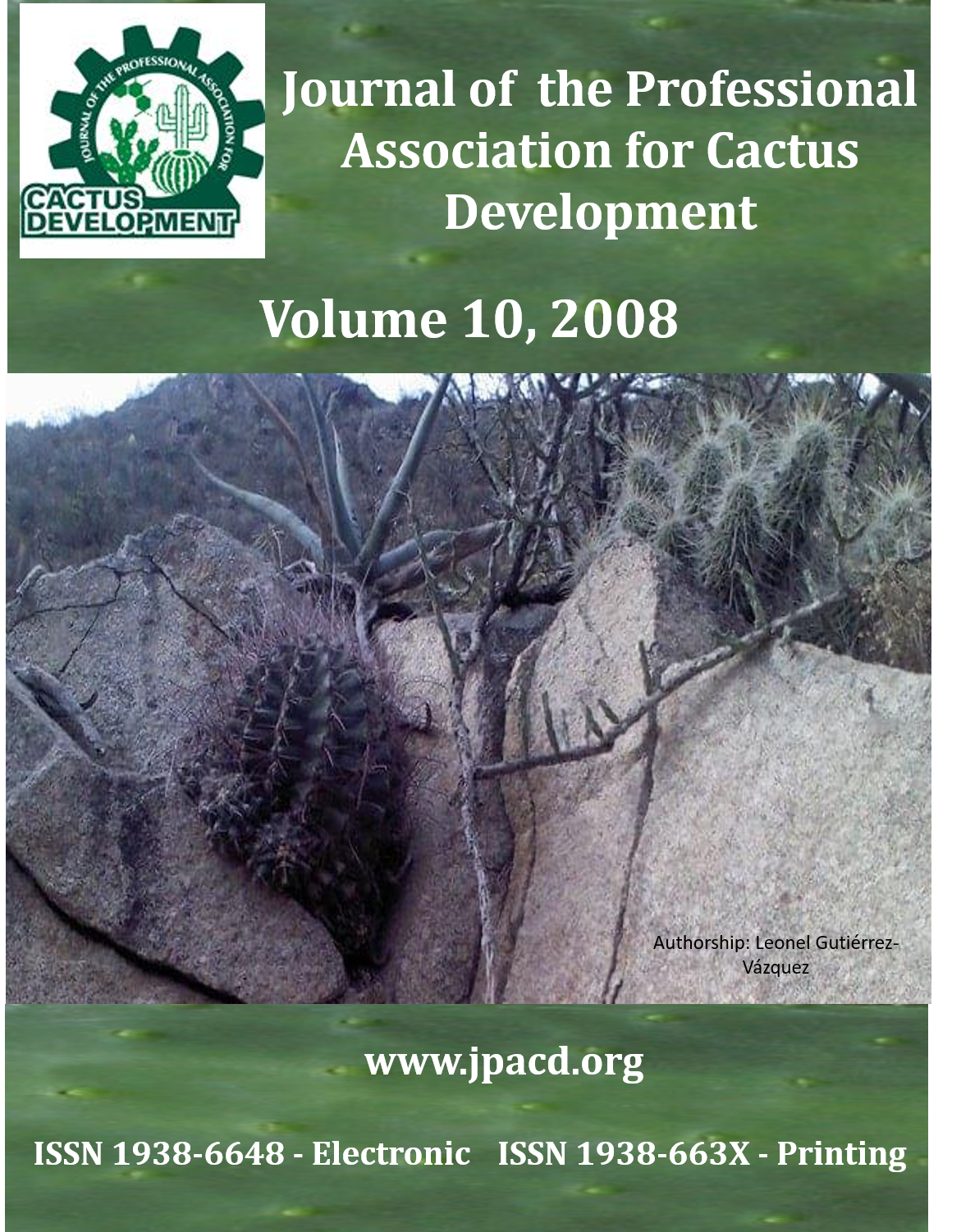Morphological Characterization of Opuntia spp.: A Multivariate Analysis
DOI:
https://doi.org/10.56890/jpacd.v10i.116Keywords:
Opuntia, classification, principal components, MexicoAbstract
The Opuntia genus is a valuable source of ancestral Mexican food. Different plant parts are used, including the stems (cladodes), fruits (“tunas”), and flowers. Additionally, the Opuntia genus is important because of its species richness, chemical composition, and adaptability for growing in very dry environments. A morphological characterization of 46 accessions of Opuntia spp. growing in Bermejillo, Durango, Mexico was carried out. Sixty-five vegetative characteristics of six plants of each Opuntia accession were quantified. Analysis of variance, multiple comparisons of means, and multivariate analysis by cluster and principal components were used. The multivariate analysis clearly separated the 46 Opuntia accessions in two groups by presence or absence of spines on the cladodes. Only width and length of cladodes, areole width, number of areoles per cladode face, and leaf length were significantly different between the two groups. The results suggest that the Opuntia genus in this plantation showed morphology uniformity and the reason could be associated with the persistent farmer selection, which takes into account agronomic practices and consumers preferences.
Publication Facts
Reviewer profiles N/A
Author statements
Indexed in
- Academic society
- Journal of the Professional Association for Cactus Development
- Publisher
- Professional Association for Cactus Development




